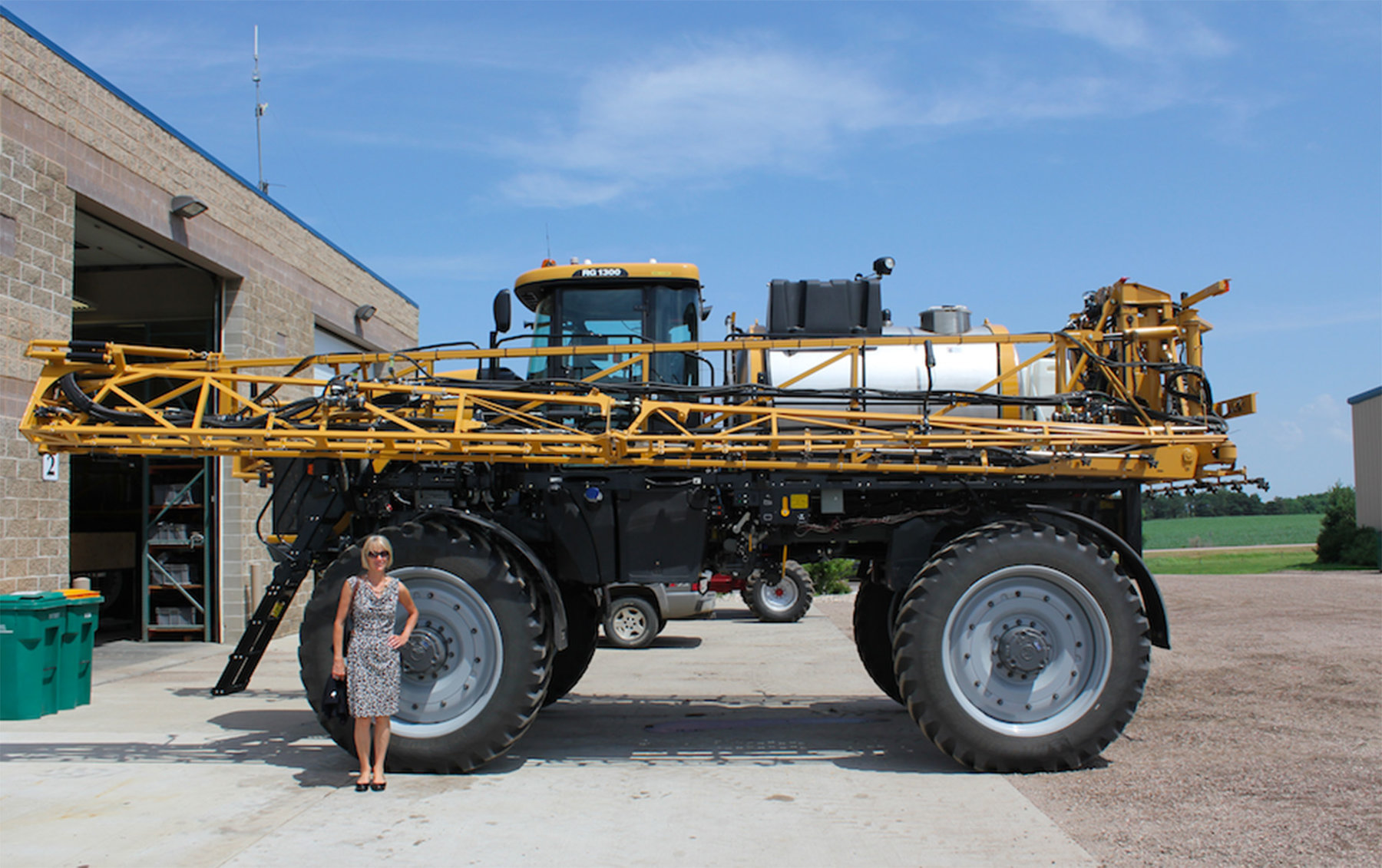Everyone has heard stories about the shale-oil boom towns that are transforming North Dakota, for better and worse. “Man camps” for oil-field workers, jobs for anyone who can work a rig or drive a truck, social distortions like those of the Klondike.

You know the stories, and the town of Williston ND (where we’ve not yet visited, but plan to), with the orange dot in the upper left-hand corner of the map above, is a frequent dateline for them.
Have you ever stopped to wonder why you don’t hear these stories about South Dakota? The map at the top offers a clue. It shows “shale plays,” or active and prospective shale-gas mining areas, as defined by the U.S. Department of Energy. A little tongue of the Gammon Play laps into South Dakota, versus the huge Bakken Play that is spread over North Dakota. The map below shows a larger view of shale basins, with potentially exploitable reserves, in the plains states. South Dakota includes almost none of the Williston Basin (pink) to the north, the Powder River Basin (tan) to the west, or the Denver Basin (a poppyish color) to the south.
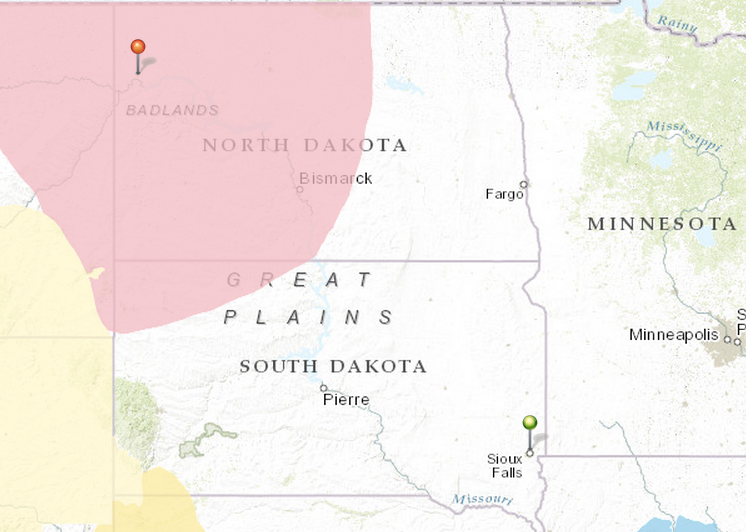
So how, then, can South Dakota be any kind of boom state on a par with North Dakota? Especially the state’s most populous city, Sioux Falls, which is in the far southeastern corner of the state (green pin) and much closer to Iowa and Minnesota than to any point in North Dakota?
What my wife and I have seen in Sioux Falls this summer, and will try to itemize, is a combination of ingredients that have together produced a genuine economic strength quite different from a shale-oil boom and potentially more instructive for the country as a whole. The unemployment rate in greater Sioux Falls now is around 3.5% — about the average for the state as a whole. (That give South Dakota overall the second-lowest unemployment rate in the country. For number one, you could go to the BLS site — or just take a wild guess, based on the maps above.) Our Marketplace partners kicked off a series of coverage of the Sioux Falls economy last week.
Through the ups and downs of the national business cycle, the Sioux Falls area has consistently had a better employment picture than the country as a whole, for reasons that both fit, and confound, normal economic models.
The part that fits: people keep moving to town, drawn by the jobs. Roughly half come from the neighboring Plains area and half from the rest of the U.S. or overseas (as my wife recently described). The part that doesn’t: the tight job market hasn’t seemed to lift wages. Example of the two together: We heard frequently that South Dakota chronically led the nation in the proportion of married women who worked. Theory A: more women had an opportunity to work. Theory B: more women had to work, because of prevailing low wage levels.
One way or another, it is a city that works, in a state that works. And the great strength of the Sioux Falls region is the breadth and diversity of its economic base. For the rest of today’s entry, let’s consider one of its high-tech employers, Raven Industries.
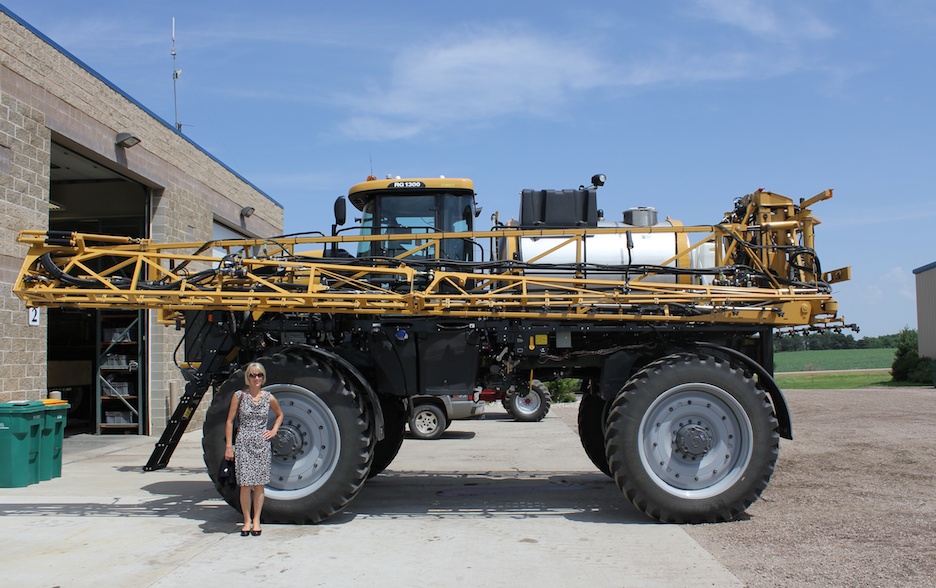
One of Raven’s divisions produces GPS guidance systems for high-tech farm equipment like the one shown above, with Deborah Fallows there to indicate scale. These (as also explained on the Marketplace report) have been part of a digitized revolution in farming. GPS guidance allows them to plow furrows longer and straighter than had ever before been possible; to apply fertilizer to the exact points where seed had been sown; and in countless other ways to speed the age of “precision agriculture.”
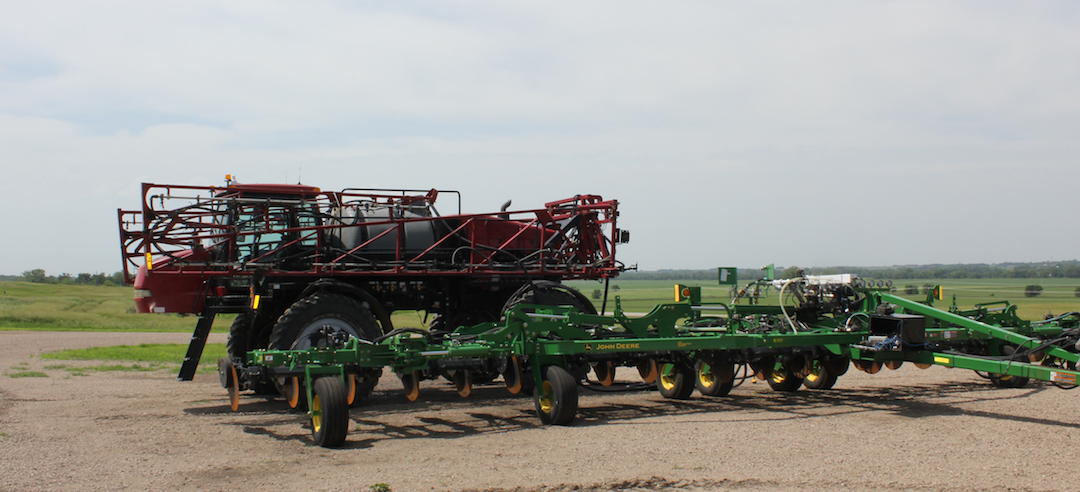
What I found most intriguing about Raven was its origin story. (Reportorial tip: The most interesting thing you can find out about a person, a company, a place, or even a country, is what it thinks its “story” is. How did it get started? What’s the secret of its successes? Or struggles? And where its story leads.) A lovingly illustrated corporate history, put out in 2006 to commemorate the company’s 50th anniversary, told the story of a group General Mills engineers in Minneapolis who came to Sioux Falls to realize their dream:

In short: during World War II and thereafter, General Mills — yes, the one you are thinking of — had an Aeronautical Research Laboratory (!) in Minnesota. A group of engineers there had a plan for new business opportunities involving high-altitude balloons; they broke off from General Mills to start on their own; and for reasons ranging from airport congestion (airports in The Cities very crowded, Joe Foss Field in Sioux Falls more welcoming) and prevailing-wind patterns, they decided to start their new company in Sioux Falls.
Since then, in ways we will explore as part of the unfolding Sioux Falls saga, the company have become dominant in a number of tech-intensive fields. These include three different applications of something I had spent almost no time thinking about: balloon technology.
First is Raven’s “Aerostat” line — what laymen would think of as great big surveillance balloons used by the Customs Service, the U.S. military overseas, and similar customers. Here’s the hangar for some of the aerostats, in a Raven location in the corn fields 10 miles north of Sioux Falls, followed by a picture of one of the things itself.
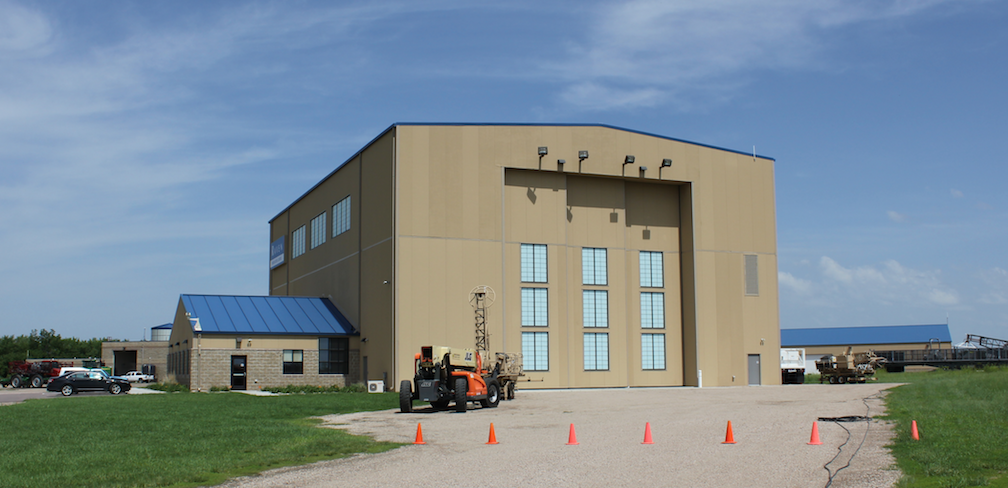
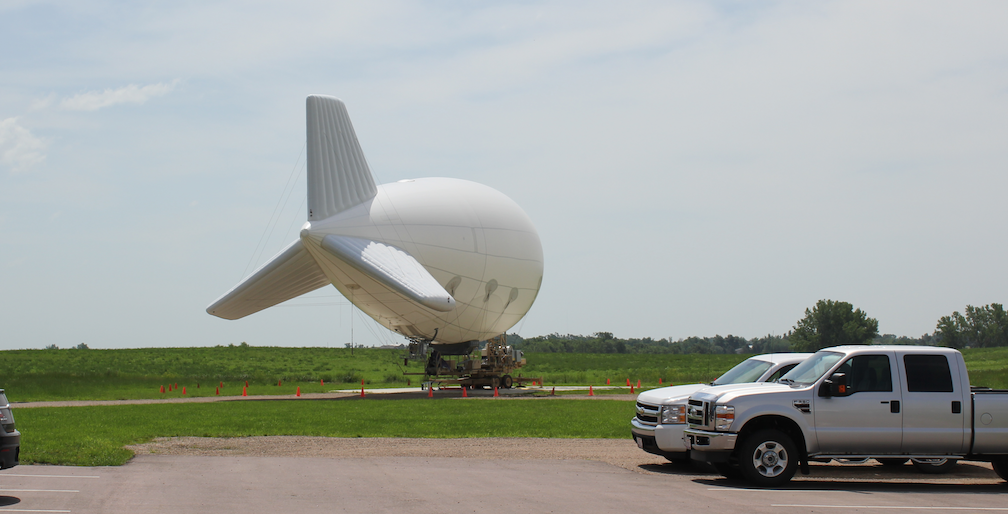
Another part (#2, if you’re keeping track) of the balloon-tech division makes the giant cartoon-character balloons you will see on the Macy’s Thanksgiving Day parade in New York this year, as in years past. I know which cartoon characters they are going to be! My wife and I have actually seen the balloons you can as yet only dream of and imagine, as they were getting put together on the hangar floor! But, charmingly, the only time the Raven officials really swore us to confidentiality was about the theme and look of the Thanksgiving Day balloons.
One more advanced-tech product coming from this corner of South Dakota is #3: the infrastructure for a major new Google initiative. Did you read this summer about “Project Loon,” Google’s new effort to provide low-cost “internet for everyone” to now-underserved parts of the world, via a network of high altitude balloons? See if you can guess where and by what company the balloons are being made.
Coming up: How Raven fits into the rest of the region’s high-tech ecology, and how Sioux Falls reminds us of America’s rough-and-ready path ahead.

